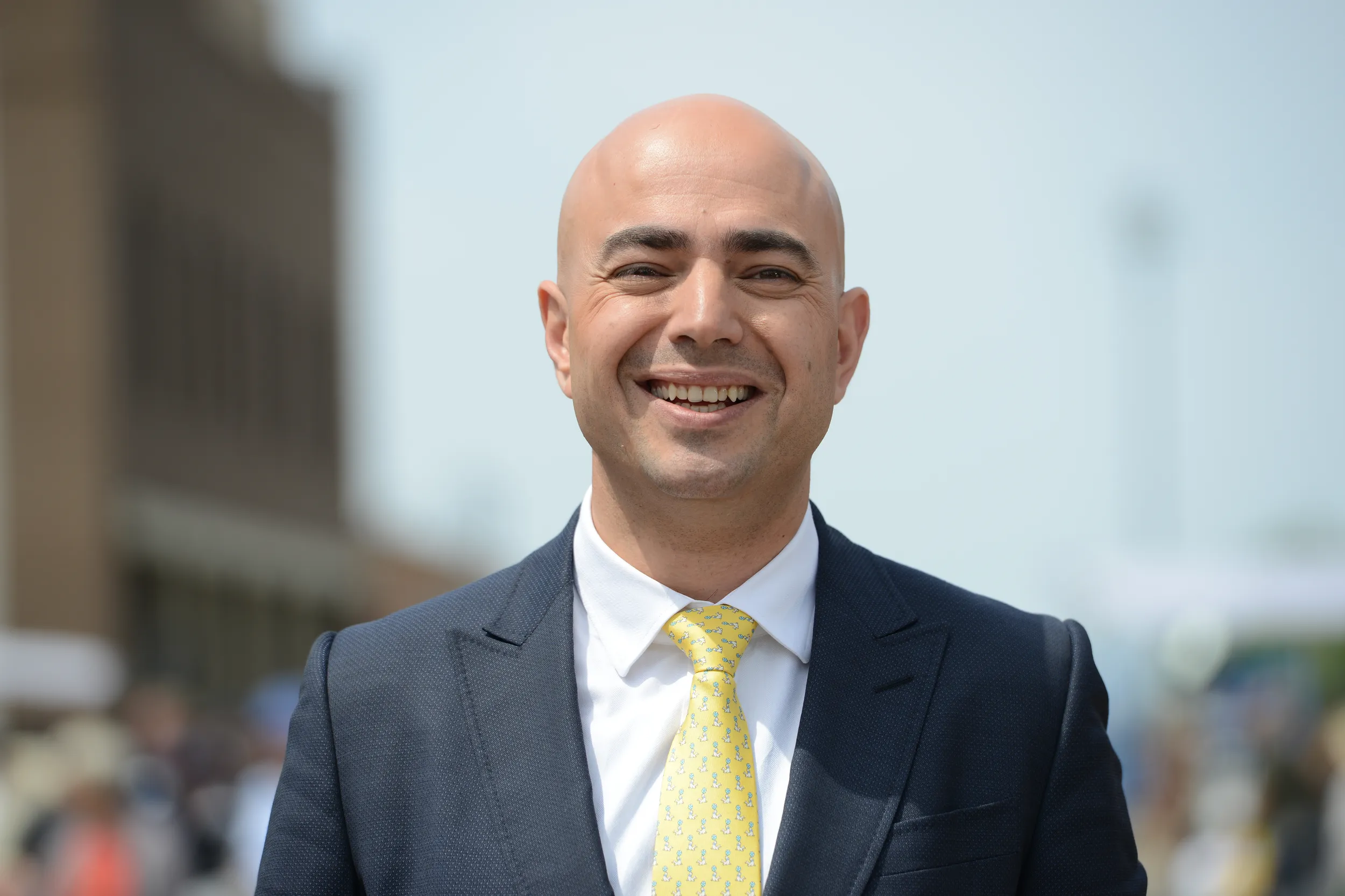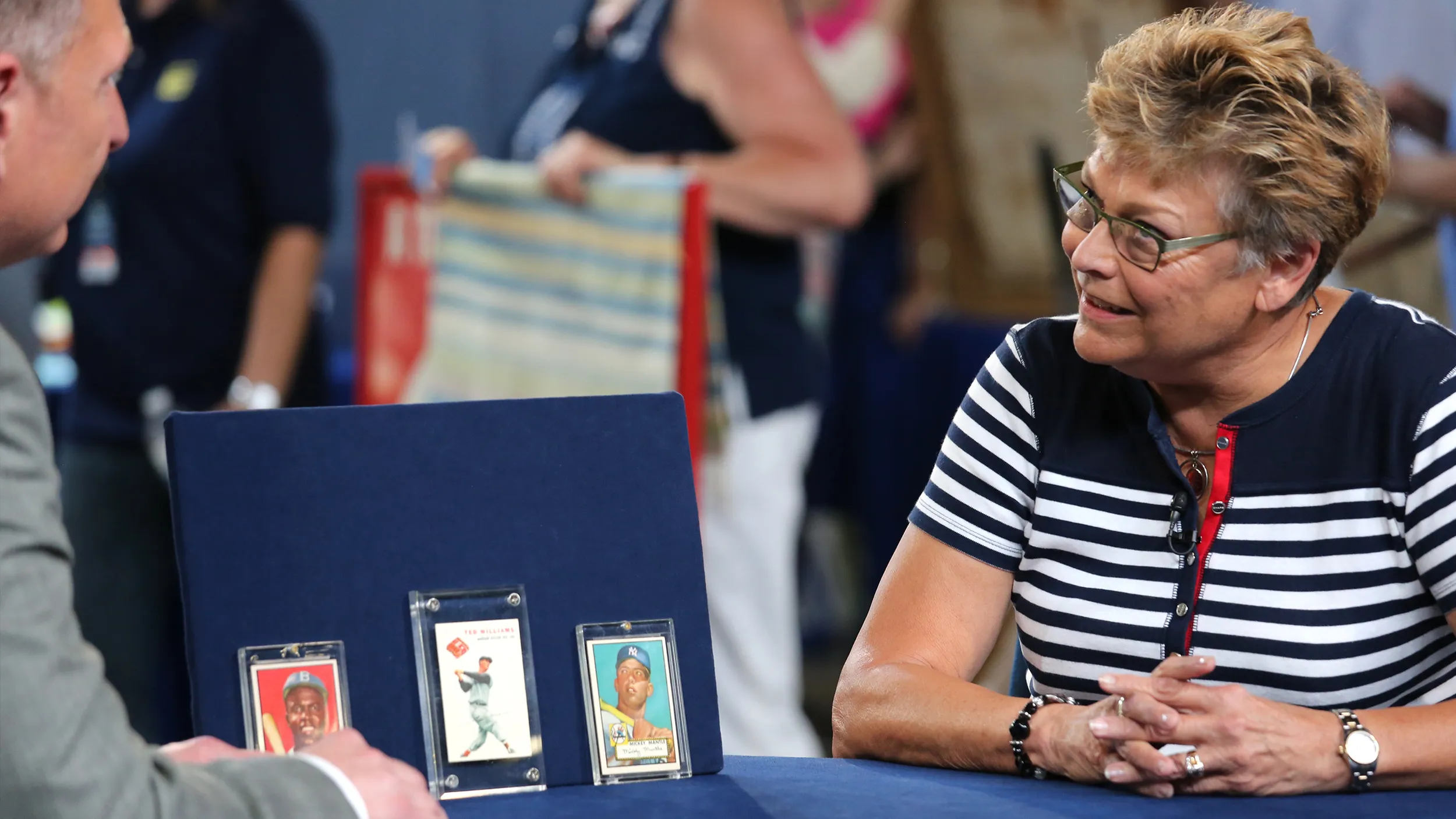GUEST: I brought a portrait of my father by Robert Rauschenberg. My father was in the service in 1945, became friends with Robert Rauschenberg. From my understanding, he wanted to go to an art show on their day of leave, and they went out, went to the art show, and Robert Rauschenberg said, "I think I can do that." And so lo and behold, a few days later, painted my dad's portrait.
APPRAISER: So you grew up, basically, with this portrait in your home.
GUEST: This portrait was always in the home, yeah.
APPRAISER: And did your family talk about the portrait at all?
GUEST: Yeah, yeah, we did. Actually, we always had two pictures on the wall, and the one was probably a two-dollar picture, and then this, was this one. And being lime green and everything, you'd always assume the one on the right was always the more expensive one, but my dad says, "No, this is signed by Robert Rauschenberg." And that's about all I really know of it.
APPRAISER: We have a couple of other things you brought in here today with the painting.
GUEST: Sure.
APPRAISER: And I think these are great, because they actually show-- this one right here shows your father...
GUEST: Yes.
APPRAISER: sitting, while in the Navy, with Robert Rauschenberg.
GUEST: Yes, exactly.
APPRAISER: Two young sailors here. At the top, actually, it even says, "Milton Ernest"-- in parentheses, "Bob"-- "Rauschenberg, (the artist)."
GUEST: Yes.
APPRAISER: And so a lot, some people don't know that Robert Rauschenberg's original name was Milton.
GUEST: Milton, he changed his name. I'm not sure exactly what age, but it was changed before the service.
APPRAISER: He was sitting in a Savarin's all-night thinking of a new name.
GUEST: Oh, okay, wow.
APPRAISER: What was interesting is that it is documented, as well, that Rauschenberg really started painting portraits right after his Naval service.
GUEST: Okay.
APPRAISER: He went to boot camp in Idaho when he was drafted in 1944.
GUEST: Okay.
APPRAISER: So you know, he was born in Texas, he studied pharmacology, and then later, he was drafted into the service. When he went to the Navy originally, he actually told the commanding officers that he didn't want to kill anybody.
GUEST: Okay.
APPRAISER: So they sent him to Camp Pendleton in San Diego, and he was working in the neuropsychiatric unit.
GUEST: Oh, right.
APPRAISER: Which actually, during that time, he worked with a lot of traumatized soldiers and sailors, so that actually affected a lot of his work later on, as well.
GUEST: And that makes sense because my father was a corpsman, so that would be maybe where they met.
APPRAISER: Yeah, well, this is really amazing, this picture right here, because it establishes also what we call the provenance of the painting-- the history of the painting-- which is very, very important for an artist as important as Robert Rauschenberg. Let's also look at this photograph right here. Another thing is about establishing the importance and the authenticity of this work, because unfortunately, there are works that are purported to be works by Rauschenberg that aren't.
GUEST: Okay.
APPRAISER: Now, if I turn this around, what we have here is something from Rauschenberg's studio. There's a Rauschenberg Foundation.
GUEST: Okay.
APPRAISER: You had sent this to them, this photograph?
GUEST: My mother and father sent that to them years ago, and I think that picture was dated in '01 for authenticity, to, to the curator.
APPRAISER: And it's wonderful that you did that. Because it does say here, "This snapshot of a portrait by Robert Rauschenberg painted in 1945," and signed by the curator, the head of the Rauschenberg Foundation.
GUEST: Okay.
APPRAISER: We're putting this into perspective a little bit and the history of it, which is amazing. Rauschenberg is one of the most important American artists of the 20th century. Do you have any idea what it is worth?
GUEST: In conversation around the dinner table, they said some-- and I don't know where they received it-- but it was, like, $500. So that's what I've always kind of thought it was worth, maybe a little bit more now.
APPRAISER: Okay. Well, if I was going to put this painting at auction today...
GUEST: Okay.
APPRAISER: Given the importance of the work, the earliness of the work, and the fact that it has such well-established provenance and an authenticity, I would put a conservative auction estimate of $40,000 to $60,000 on it.
GUEST: Holy cow, are you kidding me? (laughs) I guess it was worth more than that two-dollar picture right next to it. Amazing. (laughs) My dad would be really, really excited to hear that.



